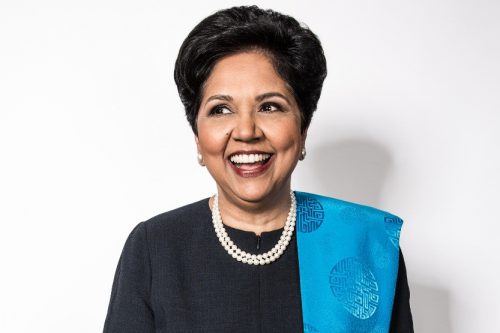By Pilli Chaudhuri Freelance Consultant @IndusGuru
How we perceive and include women in business today has changed (wo)manifold. Gender diversity with respect to work environment means men and women being hired at the same rate, given equally challenging roles, paid equally for equal work and promoted at same rate. Even though, we have come a long way in the last 50 years or so, but we are still a long way from achieving true gender equality. Women were stereotyped for jobs that needed the employee to be polite, good-looking and often empathetic. Examples would be nurses, typists, receptionists, cabin crew etc. Cut throat and competitive women were always looked down upon as “less feminine”.
According to the 2018 report of the Ministry of Labour and Employment, women workers represent only 12% at the shop floor. There is a discrimination in the nature of work as well. But a wave of workplace revolution is slowly gaining pace with Mondelez’s factory in Andhra Pradesh having 50% women shop floor workers. Even automotive factories like Tata Motors, Mahindra & Mahindra (M&M), Eicher Motors, Hero MotoCorp and Bajaj Auto are seeking to accelerate the drive of gender diversity.
But why all of a sudden such a conundrum of making a gender diverse workplace, especially in the corporate? Is this only for making the company good and inclusive?
The reason is simple – better customer experience which ultimately leads to a profitable ecosystem.
These two ultimate goals of any corporate need women representation in every hierarchical breakup. To elaborate:
1. The primary reason being globalization making our marketplace diverse. A diverse team is needed to understand the needs of a diverse consumer base. Moreover, a diverse team is creative and better at solving problems as they have a bag of ideas to work with.
2. Gender diversity promotes innovation as hindrances like stereotyping and biases get shattered. Along with unique ideas, women tend to have a better helicopter-view of problems. The reason is scientific, as it is proven that most men use a minute area in the left side of the brain while women use areas in both sides of the brain.
3. A study by Peterson Institute for International Economics found that companies with more female executives are more profitable. Women are increasingly becoming the decision-making consumers. Not having a proper representation of women at senior levels would mean firms are losing out on an opportunity to have leaders who have a better understanding of the needs and psyche of their target consumers. Hence, having more women eventually makes a firm more profitable.
4. Another important reason once told by an HR head of a leading Pharmaceutical company was that for most products (FMCG, medicines etc.) it is women who decide which brand to buy from an array of options. Hence, without taking a woman’s perspective, a marketing strategy would not fully relate to consumer behaviour.
5. A gender-balanced workforce brings diversity of thought, breadth of ideas and a robust decision-making process.
Personalities like Indra Nooyi, former CEO of Pepsico, prove a woman’s perspective in higher management can help a brand stretch itself and adapt to ever changing global market. Nooyi has responded by moving the portfolio toward healthier fare and widened customer appeal to a wide array of customers. She, being a woman thought from a woman’s sixth sense of how the market will be slowly changing into a health conscious one. Being a women makes it easier for policy makers to relate to the buyers; as in her sector it is the women who mostly influence the decision of what to buy.

In spite of such stark facts being out in the open, women hold 10.6 percent—or 643 out of the total 6,081 board seats on Fortune 500 companies! Let us look at some of the reasons for the jarring disparity in the representation of women, especially in the upper management:
1. Women are often given less challenging tasks which ultimately leads to their growth being slow. An example would be travel-intensive roles to males mostly. This not only curbs the women employees’ exposure but also their experiential growth. To hire women at junior levels and invest in them only to lose them before they can take on the senior roles is a poor outcome business-wise, returns-wise and image-wise.
2. No one can deny, there is always a tendency to assume that women have greater family-work conflict than men, and that this can bias employers’ perceptions of women’s suitability for promotions.
3. Lack of facilities for working women in most organizations cannot be overlooked as well. An example of this would be crèche facilities for new mothers.
4. A safe and secure work environment is the basic expectation anyone has from their workplace. This calls for stringent policies with zero tolerance for sexual harassment. The #metoo movement both in the US and India is influencing the corporates (who had yet not made such policies strict) to change their outlook and pen down immediate action policies. An example of this could be how an Indian IT major took an immediate decision of sacking an employee who was sending abusive messages to two women employees.
Solutions to some of these problems are already being implemented by various corporates. These include flexi-timings, work from home, crèche, among others. If the company can provide a warm and caring attitude towards its employees, organizational citizenship behaviour from the female employees could be gained much more easily than from men.
Such a plethora of problems cannot be solved only with policies. A change in perception and outlook is of utmost importance. Education and awareness right from primary school is what will purge the society from within. At the same time, the pillar support of the legal system is important to ensure compliance.
#genderdiversity #womenatwork #genderbalance #equality #genderparity
Disclaimer: The opinions expressed in this column are that of the writer. The facts and opinions expressed here do not reflect the views of IndusGuru Network Partners
